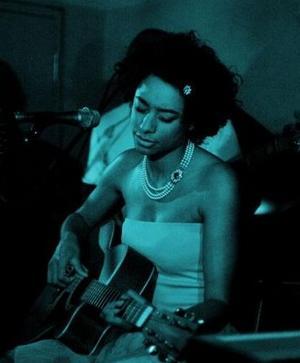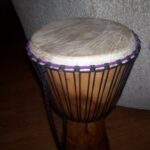The term “neo-soul” has been tossed around more times than I care to mention. I can recall when the term was first coined. Dubbed “Neo Classic Soul”, this terminology was meant to embody the works of emerging artists who captured the essence of old-school rhythm and blues. But somewhere along the way, the expression “neo-soul” has become synonymous with things that have nothing to do with anything “New” or “Soulful.” With so many fresh faces popping up on the charts, it seems that the lines are frustratingly blurred when it comes to musical genre, especially amongst African American performers in general. So what’s the low down on Neo-Soul? What does the phrase really mean? What
does the music sound like? And why has the term become so catchy?
A Miniature Music History Lesson
As the 1970’s were winding down, the magic of Motown began to give way to something a bit more artificial. Suddenly, by the year 1981, many African American artists embarked on a quest for a fresh new sound. The introduction of the synthesizer, along with several other computerized musical effects, yielded a proliferation of acts utilizing sounds which were not created by actual instruments. As the 1980’s progressed, artists like Prince and Michael Jackson dominated charts with their enticing brand of individuality, even while engaging audiences with some of this new technology. With the Computer Age on the horizon, many traditional R&B; singers found that musical production was much easier to create without the aid of multiple session musicians. Entire pieces, primed and ready for radio were pumped out with such ferocity, that there were perhaps more “One Hit Wonders” in the 1980’s than actual accomplished artists.
It was around the early to mid 1980’s that hip-hop materialized on the scene. Originating in the Northeast United States (both namely and arguably, the Bronx,) an entire culture evolved. Groups of young boys and teenagers gathered on street corners to “spit poetry” in sync with a mouth-created percussion called “beat boxing.” As this trend grew like wildfire, audiences were treated with all the beautiful hits of the 1960’s and 1970’s. Only this time we called them “samples.” Kids around this time became reacquainted with the music of their forefathers by introducing tidbits of these songs as loops in their new hip-hop songs.
By the 1990’s, rap music was a staple on the charts. And very shortly into the decade, R&B; singers started singing the choruses on many hip-hop songs. Mary J. Blige is one of the first female artists who is known for lending her raspy voice to these fiery tracks. Following her, came a litany of copy cats-some of the good, and some of them rather forgettable. At any rate, musical production in general grew to be as sparse as it was technical. While the level of technology used to produce increased dramatically, the sound remained simple, much to the chagrin of many die hard musicians. But somewhere during the mid to late 1990’s something very interesting happened…
A “Nu” Sound
With hip-hop evolving into a creative mish-mash, suddenly the lines became hazy where singers and rappers were concerned. So many songs featuring both singers and rappers had been created by the late 90’s, that soon a new genre was created to accommodate the explosion of acts combining these two styles: R&B;/Hip-Hop. For example, male singers started looking like the male rappers and vice versa; singers were donning athletic “starter” jerseys and saggy jeans-and rappers were popping out on stage in suits.
It only takes a brief foray into the catalogue of music produced in the 1990’s to recognize the examples. Jodeci, H-Town, and a few other male R&B; singers took to the stage with heavy soul lyrics, but hip-hop styles. Shortly after, another kind of singer became popular. This singer had evocative yet poetic lyrics, and a style that was strangely reminiscent of decades past. Maxwell heat up the charts with his debut album “Urban Hang Suite,” released in 1996. With his smooth falsetto and smart, clean production, Maxwell garnered a host of fans from the “young at heart” to the “young in age.” Tight on his trail came a swarm of others. But interesting to note is that not only was the charm of Maxwell’s delivery imitated, but so was his breezy, eclectic style.
Not to say that Maxwell is the father of all things “Neo-Soul”, he is certainly one to be referenced when pondering how this trend became so popular. Neo Classic Soul, or “Nu Soul” caught on in all the underground scenes all across the country. Those who grew up listening to old school hip-hop started to shun the vapid and computerized sounds of the R&B;/Hip Hop that was being churned out left and right. Furthermore, certain groups of African American youth began reaffirming their culture, and searching for the root of the music which had become so popular. The irony is that many of the musicians who had never deviated from playing live instruments, were always around during the surge of artificial sounding R&B.; It was not until record executives discovered the popularity of this reacquaintance, that the term “Neo-Soul” was born.
Where Neo-Soul Went Wrong
Suddenly, everyone who sounded like, played like, or worshipped Stevie Wonder, was stuck with the “neo-soul” label. Fades (a short African American male haircut) were soon grown out into Afros, dreadlocks, or twists. The traditional baggy jeans of the hip-hop world began fitting a little tighter. And out of the blue, it was trendy to wear anything other than gold jewelry. Ethnic stones, African monikers, and deep thoughts were all associated with this Neo-Classic Soul movement.
As an example, a former Erykah Badu back-up singer, decided to trade her birth name, Dana Williams, in favor of the name YahZarah, which she currently performs under. The name is said to be a loose interpretation of the Ghanaian phrase “Queen Mother is the Brightest Star.” Even Erykah Badu herself shed the Wright surname in favor of honoring her ancestry. Female songbird, Goapele didn’t need to change her name to fit in with the Neo-Soulers; her father actually was a South African political exile. But a brief listen to her sophomore album reveals an unnerving trend in the current state of neo-soul music: It sounds abnormally like a computerized R&B; hit, sung by an earthy-looking bohemian model. And suddenly, there are more artists clamoring for a position on the Bamboo Throne of Holisticism.
The problem with the so-called Neo Classic Soul movement is very simple: There is really nothing new about soul at all. The brand, which has traditionally been shunned by mainstream radio, is now emerging on mainstream radio as something else. Shallow lyrics and trite stories are thinly veiled under the veneer of all things earthy and poetic. As a matter of fact, black artists showing up on an album cover with an acoustic guitar are met with a guaranteed “Neo-Soul” stamp of approval by mainstream audiences. That being said, those less talented individuals hoping to cash in on the craze are now picking up an instrument for that sole purpose.
This country is plagued by labels. And the artists who truly have talent and something valid to say are sometimes repressed by the very audiences who claim to be searching for new and fresh material. Musical instruments are no longer honored as much as the individuals who played them. They are simply adornments, props for album covers. And the music currently being branded as Neo-Soul is simply a regurgitation of regurgitated sounds. There is nothing new about soul. One either has it or does not. Unfortunately, until the labeling frenzy dies, Neo-Soul will not.



